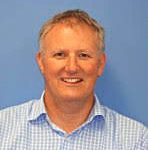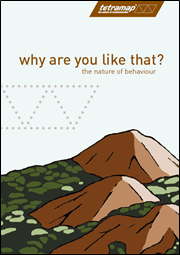Breaking communication barriers
Q&A with David Moore, government services manager
 With teams divided across New Zealand, Dave Moore, a services manager for a large government organisation, noticed that team members were ending up in conflict more often than needed. Rather than supporting each other, teams started to avoid communicating with each other. To get communication flowing, David introduced TetraMap. Here’s a look at his case and how it was resolved.
With teams divided across New Zealand, Dave Moore, a services manager for a large government organisation, noticed that team members were ending up in conflict more often than needed. Rather than supporting each other, teams started to avoid communicating with each other. To get communication flowing, David introduced TetraMap. Here’s a look at his case and how it was resolved.
What business problem were you trying to solve?
The business unit has five physical sites throughout New Zealand so the majority of communication is by telephone or email; we do use video conferencing and two or three times a year meet in person. I wanted to strengthen the level of communication across the business unit; I saw considerable benefits to increased communication which would enhance connectivity and cohesion of how we approached our work.
 How were you introduced to TetraMap?
How were you introduced to TetraMap?
I was introduced to TetraMap by another facilitator who was doing HR work at the time for our organisation and attended a workshop to understand what it was all about. I thought and felt it was very real. I’ve participated in other personality-type programmes, however, I felt TetraMap was easy to understand, had good synergies in the descriptors, and provided a safe language to use.
Did you have any reservations about using TetraMap?
After my experience with TetraMap, I thought my leadership team would benefit from the experience, as well adding another communication skill. I needed people to be open to a new approach, prepared to learn something about themselves as well as their colleagues, and of course, to then apply their learnings. I was a little nervous about doing this; we’re very compliance-driven and I worried some people would consider it ‘fluffy’.
How did people react?
I had some concerns to start with on how certain people would engage with it. I was pleasantly surprised: individuals appeared to easily relate to the process and materials and were prepared to share a little about the way they think, behave, and communicate, and we had some fun as well. I found people wanted to engage and participate.
What were some of the responses?
It was quite a powerful day as people openly talked about their experiences with communication, how they felt, and how they perceived others. A lot of people were shocked at the truthful responses. I heard a lot of “I didn’t know I was seen this way” or “It’s not their problem, it’s my problem” – a few light bulbs went off. As I stated, it has also given us a really safe language to use.
How have you applied this language?
On conference calls, for instance, we say, “I appreciate your approach but this is my preference (remember, I’m high in Water), so here is how I see it.” Or individuals will start to take notice of other people’s preferences by saying, “I can see the Fire coming out in you.” Instead of disagreeing, we can use this language to understand each other better and see each other’s approach. It has proactively removed real or perceived communication barriers.
How will you use TetraMap moving forward?
I build this [TetraMap] into my everyday communication; understanding how others think and knowing their communication preferences is very powerful. I have a list of my leadership team’s [individual] communication preferences above my phone, so it reminds each time I pick up the phone how best to pitch my communications to get the best out of them.
I believe the process and language TetraMap has provided have enabled my team to improve communications with their peers as well as their people – after all, it’s all about the people and communicating with them to achieve great results.
